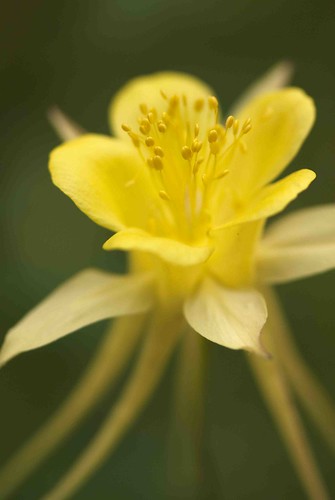Tip of the Week: The Language of Flowers
Posted in Emily Dickinson, Exhibitions, Gardening Tips on May 3 2010, by Sonia Uyterhoeven
 |
Sonia Uyterhoeven is Gardener for Public Education. Join her each weekend for home gardening demonstrations on a variety of topics in the Home Gardening Center. |
 This spring The New York Botanical Garden is paying tribute to the American poet Emily Dickinson in the exhibition, Emily Dickinson’s Garden: The Poetry of Flowers. Emily Dickinson was an avid gardener and an amateur botanist. She carefully pressed and dried wildflowers and slipped them between the pages of her letters and her poems. She presented flowers with a few lines of verse as a welcoming gift to the occasional visitor.
This spring The New York Botanical Garden is paying tribute to the American poet Emily Dickinson in the exhibition, Emily Dickinson’s Garden: The Poetry of Flowers. Emily Dickinson was an avid gardener and an amateur botanist. She carefully pressed and dried wildflowers and slipped them between the pages of her letters and her poems. She presented flowers with a few lines of verse as a welcoming gift to the occasional visitor.
As poets did in earlier times, Emily Dickinson referred to the symbolic meaning of flowers in her poems. She saw the violet as a sign of humility, the native arbutus as an emblem of candor, and the poppy as a projection of doom.
The language of flowers, which assigns symbolic meanings to flowers and plants, was a craze in 19th-century America. Floral dictionaries flooded the market, ranging from simple indexes to elaborate texts with colorful images.
Symbolic meanings were often drawn from legends, folklore, and mythology. The association of the daffodil (Narcissus) with egotism, for example, came from the myth of Narcissus, a beautiful youth who spent so much time admiring his reflection in a pool that he pined away and died. The gods pitied him and turned him into a flower. Other meanings came from a plant’s appearance or attributes. The oak tree represented strength; the columbine (pictured) alluded to the Holy Spirit, since the flower was thought to resemble a dove.
Flower color was also important in the language of flowers. White was associated with innocence, red with love, passion, or ardor. The symbolic meaning might vary if the flower was fresh or dry, open or in bud. A red rose bud signified hope, while the red rose in full bloom signified love. Flowers could have several, sometimes contradictory meanings. Lavender, for example, meant luck, happiness, or distrust.
During its heyday the language of flowers was taken to extremes. Meanings could change according to where the flower was worn. A marigold in the hair meant mental anguish; worn on the bosom, it meant indifference. The language became so complex that the direction in which the flowers were arranged in a bouquet indicated whether the sentiments referred to those of the receiver or the giver.
While there had always been a strong tradition of floral symbolism in Western culture, the impetus for its resurgence in Europe during the late 18th century came from the East. The Turks had a tradition called Selam—sending a greeting encoded in flowers and objects—that was eagerly adopted by the French. The Eastern tradition was based on rhymes and cultural associations that lost their meaning in translation. In the hands of the French, the language of flowers became increasingly symbolic.
In England and America, studying the language of flowers was not merely a frivolous pastime. Many floral dictionaries included instruction in botany and encouraged readers to dry specimens, study the structure of flowers, and learn the Latin binomial names. Botany was viewed as an appropriate study for every accomplished young woman. In the floral dictionaries youthful romantic notions and earnest study found a common ground.
The language of flowers was in vogue until the 1880s. As the 19th century drew to a close, women continued to make floral arrangements and bouquets, but fashions had changed and the floral dictionaries full of symbolic meanings were regarded as old-fashioned.
When the language of flowers was at its most popular, did suitors actually send intricate romantic messages through the arrangement of a floral bouquet? Perhaps some did, but the satires of the time indicate that the language of flowers was more often a playful diversion for women than a well-thought-out system of communication for their suitors.
In my next blog, I will provide the meanings of certain flowers, as mentioned in a mid-19th-century book written by one of Emily Dickinson’s teachers.

